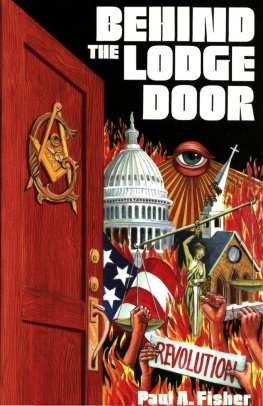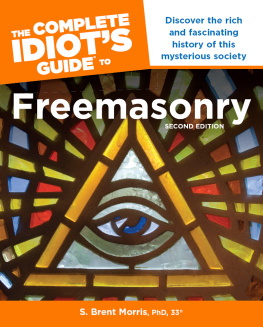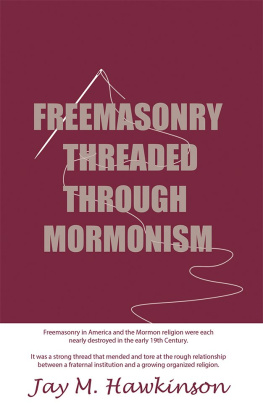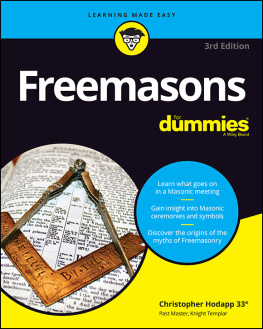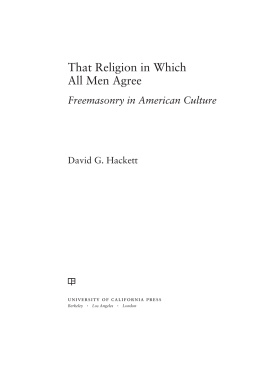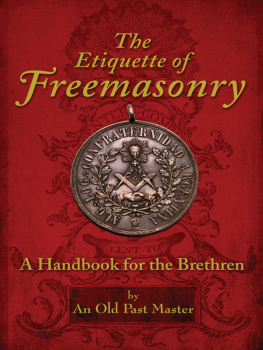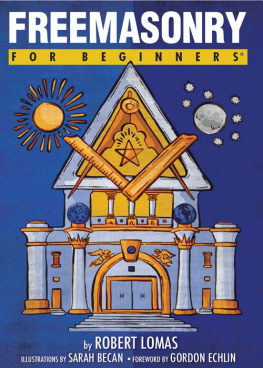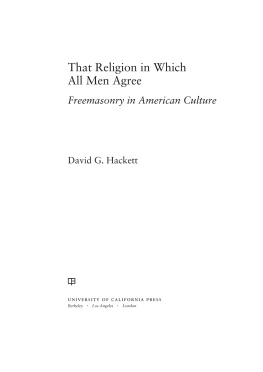BEHIND
THE LODGE DOOR
CHURCH, STATE AND FREEMASONRY IN
AMERICA
Paul A. Fisher
Originally published in March, 1988, hardbound, by Shield Publishing Co., Bowie, MD. Second Shield edition, hardbound, October, 1989. Shield paperbound edition, December, 1989.
Copyright 1988, 1989, 1994 by Paul A. Fisher.
All rights reserved. No part of this book may be reproduced or transmitted, for public distribution, by any means, electronic or mechanical, including photocopying, recording, or by any information storage or retrieval system, without permission in writing from the publisher. Brief passages may be quoted without permission.
Library of Congress Catalog Card No.: 93-61894
TAN BOOKS
Charlotte, North Carolina
1994
To Ruth and our children
Maureen Elizabeth
Kathleen Ruth
Sean Paul
Ann Regina
Margaret Veronica
Megan Marie
Matthew O'Mara
Patricia Siobhan
Terrence Jerome
CONTENTS
AMAZING DISCOVERY
Prejudice by Supreme Court Justices is not a thought which comes readily to mind when thinking of the American system of justice.
Yet, for at least three decades (beginning in the 1940s) the opinions of a significant number of Justices were influenced by an anti-Christian and anti-Catholic philosophy when rulings were fashioned on the religion clause of the First Amendment to the U.S. Constitution. ("Congress shall make no law respecting an establishment of religion, or prohibiting the free exercise thereof...")
Moreover, because of stare decisisthe legal doctrine which holds that a principle of law established by one judicial decision is accepted as an authoritative precedent for resolving similar legal conflictsthe religion-clause opinions rendered by the Court during that 30-year epoch have formed the basis for virtually all subsequent decisions on the clause since that time.
Although many people have been outraged by the Court's decisions regarding the place of religion under the Constitution, most citizens are convinced the American judicial system is eminently fair and just.
The latter view prevails largely because of a perception that Court nominees are carefully scrutinized to assure representation on the bench of a broad spectrum of the nation's varied groups. For example, it is generally thought that certain segments of the population have a non-defined "right" to a seat on the Court. When selections for a vacancy on the bench are under consideration, careful thought is given to a "Black seat," a "Jewish seat," a "Catholic seat," and a "woman's seat," not to mention choosing jurists who are sympathetic to labor, industry, and the medical and academic fraternities.
Strangely, however, mention is never made of two other groups in society which apparently have been successful in making silent claims to seats on the Court. Those two groups are Unitarians and Freemasons. Masons dominated the high bench from 1941 to 1971. That was an era when traditional Judeo-Christian values were removed from the curricula of public schoolsand from public life generally.
That amazing (and rarely discussed) facet of American jurisprudence was discovered completely by accident when the author was conducting research on the religion clause of the First Amendment to the Constitution.
Court's Dramatic Reversal On Traditional Religion
The research focused on trying to find a rationale for the Court's dramatic reversal of the role of Judeo-Christian religious values in public life, beginning in the 1940s.
Careful study showed that the Court's 1947 Everson decision was the keystone opinion upon which almost all subsequent religion-clause cases have been based. However, close scrutiny of the clause and the history of its conception and adoption failed to uncover convincing evidence to support the Court's view that the Constitution erected a "wall" which separates things religious from things civil in our society.
For example, neither Constitutional history nor legal precedent prior to Everson support the following words frequently quoted from the majority opinion in that decision: "The 'establishment of religion' clause of the First Amendment means at least this:...No tax in any amount, large or small, can be levied to support any religious activities or institutions, whatever they may be called, or whatever form they may adopt to teach or practice religion... In the words of Jefferson, the clause against establishment of religion by law was intended to erect 'a wall of separation between church and State.' Reynolds v. United States, supra at 164."
Following Everson, the Court repeatedly leaned on the "wall" to impose its will, and prohibited public financial assistance to children attending schools teaching traditional religious values.
As a consequence, the high bench: outlawed released time for children to attend religious classes within public school buildings;
Related cases denied State funds to religious-oriented schools for teaching aids, periodicals, maps, etc.; banned singing of Christmas carols in public schools; prohibited public school teachers from teaching in religious schools; and held that a law permitting employees to observe the Sabbath as a day of rest impermissibly advanced a particular religious practice, and thus violated the religion clause.
Those decisions by the Court seemed to demonstrate a bias in favor of a totally secularist society, and my research could uncover no convincing evidence that the First Amendment ever was intended to quarantine religion from public life, a proposition being advanced suddenly by the Court in the 1940s.
The Court's curious tilt stirred nagging questions:
Why did the high bench suddenly take up an interminable series of religion-clause cases in the middle of the 20th Century?
Why did the high bench in these latter years seem to ignore the legislative history of the religion clause in the Constitutional Conventions, and when it was crafted by the First Congress and sent to the people for ratification?
Why was a figure of speech"a wall of separation between church and State"enshrined as a rule of law?
Legal briefs submitted by attorneys in the various religion-clause cases provided no answers; nor did the Court's numerous opinions on the subject illuminate the dilemma.
Bias On The Bench
And then, by accident, the obvious answer suddenly suggested itself in mid-summer, 1975: There was bias on the bench.
That insight into the puzzle was partially provided by a 1975 article in The Washington Post, titled, "The World of Felix Frankfurter," which basically consisted of excerpts from a book by Joseph P. Lash, based on diaries of the late Justice Felix Frankfurter.
The article quoted Frankfurter's colleague, Justice Louis D. Brandeis, commenting on Justice Hugo L. Black, author of the majority opinion in the seminal Everson decision. Some justices in the minority on that decision viewed Brother Black as being less rigorous than they in denying state aid to Catholic schools. Brandeis said:
"Black hasn't the faintest notion of what tolerance means, and while he talks a lot about democracy, he is totally devoid of its underlying demand which is tolerance of his own behavior...."
That excerpt prompted me to visit the Manuscript Division of the Library of Congress to read portions of Frankfurter's diaries and papers, as well as available papers of the other Justices who had participated in the Everson decision.
A box of Frankfurter's papers, titled "Photocopies of Missing Manuscripts," contained a record of a conversation between Frankfurter and Brandeis, dated July 1 (no year, although internal evidence suggests 1922), in which the latter is quoted as saying he "never realized until [he] came to the Supreme Court how much (judges] are diverted by passion and prejudice and how closed the mind can be.... "
Next page
